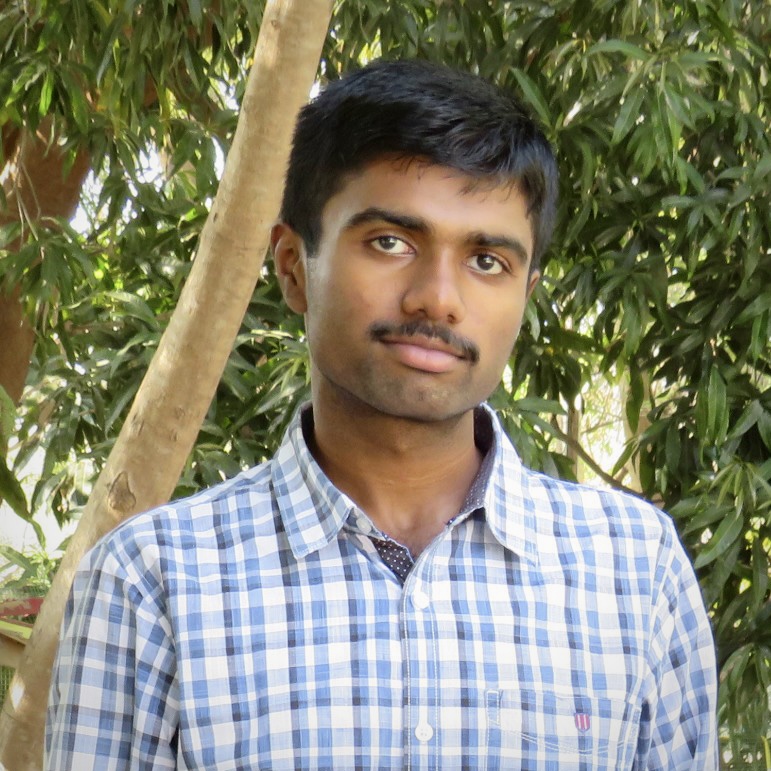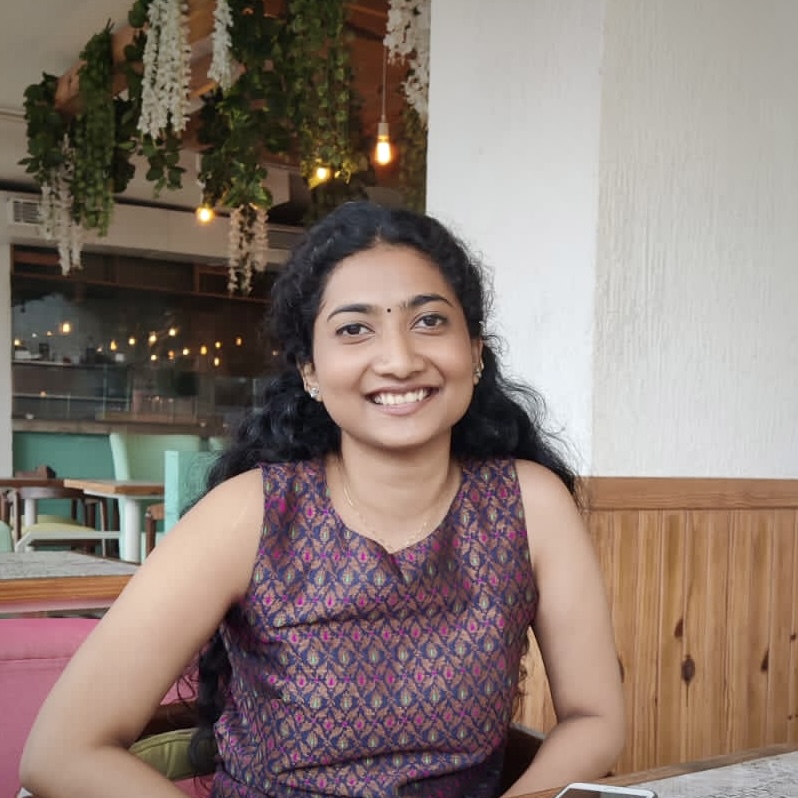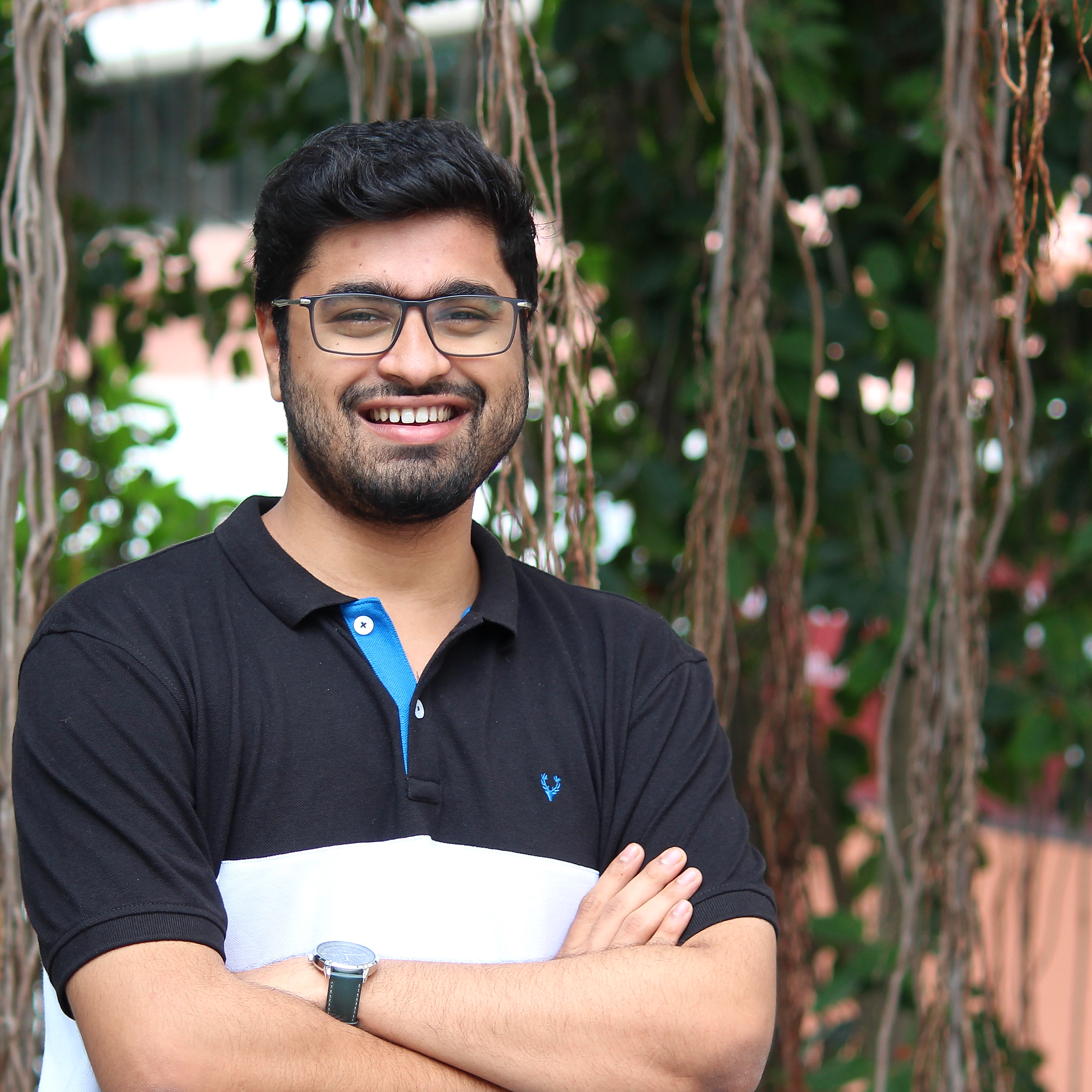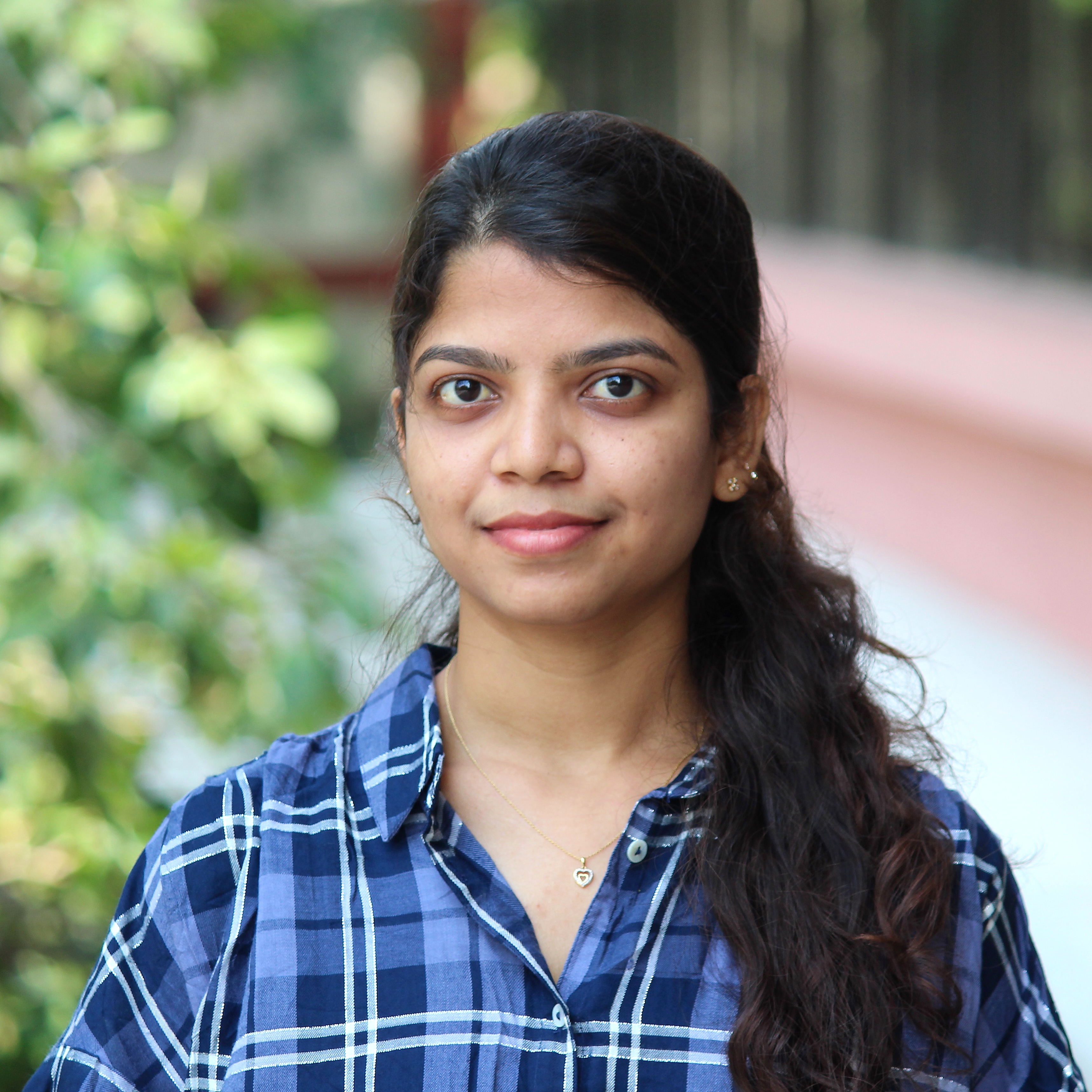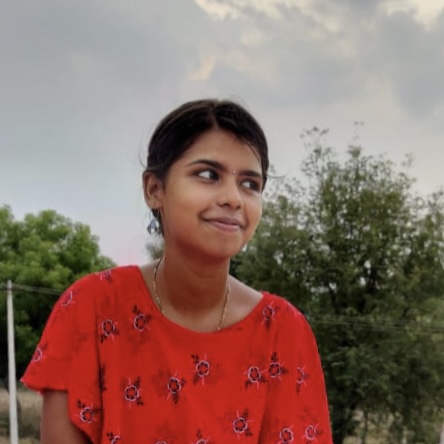Current research
-
01 Pickering emulsions
Ref: Upendar et al., Advanced Materials Interfaces (under review) emulsions (PE), are liquid-in-liquid dispersions stabilized by particles adsorbed at the liquid-liquid interfaces. These type of emulsions have received ample attention for their potential applications in drug delivery, food formulations, cosmetics, porous materials, catalytic reactions and enhanced oil recovery. Compared to surfactant-stabilized emulsions, PE have superior features such as prolonged stability and tunable permeability. Depending on specific applications, stabilization of PE as well as their destabilization are desired. For instance, during the extraction of crude oil from reservoirs, oil-in-water or water-in-oil emulsions is formed. Breaking of emulsions into immiscible bulk phases (destabilization) is required for separation of oil. Similarly, catalytic particle-stabilized PE are important in the chemical reactions involving biphasic systems due to the availability of high interface area. At the end emulsions need to be destabilized to recycle the catalyst and separate the final product. In this project we use unconventional methods to induce destabilization of PE using additives that are mutually soluble in water and oil. We carry out a detailed experimental and computer simulation study to fully comprehend the mechanism underlying destabilization of PE.
emulsions (PE), are liquid-in-liquid dispersions stabilized by particles adsorbed at the liquid-liquid interfaces. These type of emulsions have received ample attention for their potential applications in drug delivery, food formulations, cosmetics, porous materials, catalytic reactions and enhanced oil recovery. Compared to surfactant-stabilized emulsions, PE have superior features such as prolonged stability and tunable permeability. Depending on specific applications, stabilization of PE as well as their destabilization are desired. For instance, during the extraction of crude oil from reservoirs, oil-in-water or water-in-oil emulsions is formed. Breaking of emulsions into immiscible bulk phases (destabilization) is required for separation of oil. Similarly, catalytic particle-stabilized PE are important in the chemical reactions involving biphasic systems due to the availability of high interface area. At the end emulsions need to be destabilized to recycle the catalyst and separate the final product. In this project we use unconventional methods to induce destabilization of PE using additives that are mutually soluble in water and oil. We carry out a detailed experimental and computer simulation study to fully comprehend the mechanism underlying destabilization of PE.
-
02Rheology of polymer-nanoparticle
Ref: Mani et al., Journal of Rheology (under review) Telechelic polymers are used as rheology modifiers in many applications such as paints, paper coatings and DNA sequencing. In particular, hydrophobically modified ethylene oxide urethane (HEUR) polymers are commercially used as rheology modifiers in water-borne paints. HEURs are non-ionic telechelic polymers with hydrophobic moities at the ends, which are typically Cn alkanes. The hydrophobic attraction strength can be increased by increasing the number of carbons in the alkane. HEUR polymer end groups adsorb on latex particles in configurations analogous to those in telechelic micelles: loops, where both ends are adsorbed onto the same particle; bridges, where the ends adsorb on two different particles; and dangling with one end adsorbed and the other end free. Furthermore, there could be “free” polymer chains isolated in solution or forming HEUR forming micelles. For latex-HUER suspensions, shear thinning behavior and the dependence of viscosity on hydrophobe length were found to be analogous to the behavior of solutions of HEUR micelles but without the shear thickening regime, for a fixed volume fraction of latex particles and HEUR polymer concentration. We carry out coarse-grained Brownian dynamics simulations of shearing flow of a colloidal suspension bridged by telechelic polymers with “sticky” end groups by treating the polymer as either a finitely extensible dumbbell or a three-bead “trumbbell.” This study provides the first mesoscale simulations of these suspensions, useful for assessing and improving constitutive equations for these suspensions.
Telechelic polymers are used as rheology modifiers in many applications such as paints, paper coatings and DNA sequencing. In particular, hydrophobically modified ethylene oxide urethane (HEUR) polymers are commercially used as rheology modifiers in water-borne paints. HEURs are non-ionic telechelic polymers with hydrophobic moities at the ends, which are typically Cn alkanes. The hydrophobic attraction strength can be increased by increasing the number of carbons in the alkane. HEUR polymer end groups adsorb on latex particles in configurations analogous to those in telechelic micelles: loops, where both ends are adsorbed onto the same particle; bridges, where the ends adsorb on two different particles; and dangling with one end adsorbed and the other end free. Furthermore, there could be “free” polymer chains isolated in solution or forming HEUR forming micelles. For latex-HUER suspensions, shear thinning behavior and the dependence of viscosity on hydrophobe length were found to be analogous to the behavior of solutions of HEUR micelles but without the shear thickening regime, for a fixed volume fraction of latex particles and HEUR polymer concentration. We carry out coarse-grained Brownian dynamics simulations of shearing flow of a colloidal suspension bridged by telechelic polymers with “sticky” end groups by treating the polymer as either a finitely extensible dumbbell or a three-bead “trumbbell.” This study provides the first mesoscale simulations of these suspensions, useful for assessing and improving constitutive equations for these suspensions.
-
03Aggregation of amyloid β protein
 Plaques of amyloid beta (Aβ) protein are associated with neuro- degenerative diseases, and preventing their formation and dissolution of plaques are essential to the development of therapeutics. Nanoparticles (NP) are known to inhibit amyloid fibrillation. The nominee uncovered the role of the surface charge of NP from experimental and computational study: if the residues corresponding to the β-sheet are charged, addition of oppositely charged NP should inhibit fibrillation, irrespective of the material composition of the NP. The kinetics of inhibition follows the predictions of the detailed kinetic model developed in house and molecular dynamics simulations. It is demonstrated that gold nanorods (AuNRs) and silver triangular nanoplates (AgTNPs) could inhibit the formation of Aβ fibrils and that their shape-dependent plasmonic properties could be exploited to dissolve Aβ fibrils. As AuNR absorb near-infrared (NIR) light and creates hotspots, NIR laser applied for 2 min facilitated the thermal dissolution of mature Aβ fibrils. The study provides new insights to design plasmonic nanoparticle-based therapeutics to cure neurodegenerative diseases.
Plaques of amyloid beta (Aβ) protein are associated with neuro- degenerative diseases, and preventing their formation and dissolution of plaques are essential to the development of therapeutics. Nanoparticles (NP) are known to inhibit amyloid fibrillation. The nominee uncovered the role of the surface charge of NP from experimental and computational study: if the residues corresponding to the β-sheet are charged, addition of oppositely charged NP should inhibit fibrillation, irrespective of the material composition of the NP. The kinetics of inhibition follows the predictions of the detailed kinetic model developed in house and molecular dynamics simulations. It is demonstrated that gold nanorods (AuNRs) and silver triangular nanoplates (AgTNPs) could inhibit the formation of Aβ fibrils and that their shape-dependent plasmonic properties could be exploited to dissolve Aβ fibrils. As AuNR absorb near-infrared (NIR) light and creates hotspots, NIR laser applied for 2 min facilitated the thermal dissolution of mature Aβ fibrils. The study provides new insights to design plasmonic nanoparticle-based therapeutics to cure neurodegenerative diseases.
-
04Synthesis of nanoparticle and modelling
Ref: Pandurangan et al., Phys. Chem. Chem. Phys (under review) The main aim of the project is to control the growth of anisotropic gold nanoparticles (AuNP) using a complementary approach that combines experimental and multiscale modelling methods for both batch and continuous processes. We aim to synthesize anisotropic Au NPs using a seeded growth protocol in the presence of binary surfactant mixtures using batch and continuous methods and study their growth kinetics experimentally. We combine equilibrium thermodynamics and transport models with experimental data develop process models that capture the anisotropic growth of Au NPs and so enable the rational design of batch and continuous experiments. In particular, we study the adsorption of CTAB/DDAB surfactants on quasi-spherical crystalline Au seed particle on its different crystal planes using Molecular Dynamics (MD) simulations. The free energy of a given facet is in turn affected by the surfactant adsorption energy and coverage, and the initial surface energy before any passivation. The equilibrium coverage is regulated by the adsorption energy and the environment (surfactant concentration, temperature). For comparison, simulation is also done on adsorption of CTAB on flat planes, corresponding to adsorption on bulk Au surface. Hence, a study into the dependence of coverage and the initial positions of the surfactants, also taking into account the adsorption energy per unit area might explain a route to control the anisotropic growth of the Au NPs.
The main aim of the project is to control the growth of anisotropic gold nanoparticles (AuNP) using a complementary approach that combines experimental and multiscale modelling methods for both batch and continuous processes. We aim to synthesize anisotropic Au NPs using a seeded growth protocol in the presence of binary surfactant mixtures using batch and continuous methods and study their growth kinetics experimentally. We combine equilibrium thermodynamics and transport models with experimental data develop process models that capture the anisotropic growth of Au NPs and so enable the rational design of batch and continuous experiments. In particular, we study the adsorption of CTAB/DDAB surfactants on quasi-spherical crystalline Au seed particle on its different crystal planes using Molecular Dynamics (MD) simulations. The free energy of a given facet is in turn affected by the surfactant adsorption energy and coverage, and the initial surface energy before any passivation. The equilibrium coverage is regulated by the adsorption energy and the environment (surfactant concentration, temperature). For comparison, simulation is also done on adsorption of CTAB on flat planes, corresponding to adsorption on bulk Au surface. Hence, a study into the dependence of coverage and the initial positions of the surfactants, also taking into account the adsorption energy per unit area might explain a route to control the anisotropic growth of the Au NPs.
-
05Collective dynamics of active particles
Ref: Pilla et al., Journal of Physics: Condens. Matter, (under review) Hrishikesh et al, Nature Communication (under review) Non-spherical self-propelling colloidal particles offer many possibilities for creating a variety of self-propelling motions mimicking the dynamics of bacteria. The nominee found a transition from linear to circular motion in active spherical-cap particles near a substrate. These particles were first synthesized in the nominee’s lab. Self- propulsion is induced by self-diffusiophoresis by catalytic decomposition of hydrogen peroxide (H2O2) on one side of the particle. Asymmetric distribution of reaction products combined with the asymmetric shape of the particle gives rise to two types of motions depending upon the relative orientation of the particle with respect to the underlying substrate. The study demonstrated the use of non-spherical particles to create linear and circular motion by varying the fuel concentration.
We use Brownian dynamics simulations with and without hydrodynamic interactions to study the aggregation behavior of active colloids as a function of activity, interaction and rotational diffusivity.
Non-spherical self-propelling colloidal particles offer many possibilities for creating a variety of self-propelling motions mimicking the dynamics of bacteria. The nominee found a transition from linear to circular motion in active spherical-cap particles near a substrate. These particles were first synthesized in the nominee’s lab. Self- propulsion is induced by self-diffusiophoresis by catalytic decomposition of hydrogen peroxide (H2O2) on one side of the particle. Asymmetric distribution of reaction products combined with the asymmetric shape of the particle gives rise to two types of motions depending upon the relative orientation of the particle with respect to the underlying substrate. The study demonstrated the use of non-spherical particles to create linear and circular motion by varying the fuel concentration.
We use Brownian dynamics simulations with and without hydrodynamic interactions to study the aggregation behavior of active colloids as a function of activity, interaction and rotational diffusivity.
-
06Self-assembly of patchy colloids
Ref: Thomas et al., Phys. Chem. Chem. Phys. 2020, 22, 14201 - 14209. Shelke et al., Langmuir 2017, 33: 6760 - 6768. Sabapathy et al., Phys. Chem. Chem. Phys. 2017, 19, 13122 - 13132. Colloidal particles have been used as an experimental model system to study various features of phase behaviour such as self-assembly, gelation, and crystallization. Attention has been given toward the synthesis of spherical and anisotropic colloids with different surface functionalities, commonly known as patchy particles. These particles mimic shape and directional interactions of molecules and permit the study the formation of diverse varieties self-assembled structures. Several type of these colloidal particles were designed and synthesized in the nominee’s lab. Further self-assembly of some of these colloids are shown in Figure below: controlled assembly of gold nanoparticles (a) and gold nanorods (b) on colloids as rings, staggered assembly of spherical-cap colloids (c) and one-dimensional assembly of bipolar colloids (d).
Colloidal particles have been used as an experimental model system to study various features of phase behaviour such as self-assembly, gelation, and crystallization. Attention has been given toward the synthesis of spherical and anisotropic colloids with different surface functionalities, commonly known as patchy particles. These particles mimic shape and directional interactions of molecules and permit the study the formation of diverse varieties self-assembled structures. Several type of these colloidal particles were designed and synthesized in the nominee’s lab. Further self-assembly of some of these colloids are shown in Figure below: controlled assembly of gold nanoparticles (a) and gold nanorods (b) on colloids as rings, staggered assembly of spherical-cap colloids (c) and one-dimensional assembly of bipolar colloids (d).
Collaborators
- Dr. Ronald G. Larson University of Michigan, USA
- Dr. Sanat K. Kumar Columbia University, New York, USA
- Dr. Sulalit Bandyopadhyay Norwegian University of Science and Technology (NTNU), Trondheim, Norway
- Dr. Hajime Tanaka The University of Tokyo, Japan
- Dr. Saji George McGill University, Canada
Alumni
- Dr. Sriram Krishnamurthy
- Sameer Kalghatgi
- Akshat Pandey
- Dhammadip gajbhiye
- Dr. Raghuram E
- Dr. Pandurangan K (Assistant Professor at Department of Chemical Engineering, VIT Univ.)
- Dr. Bhadra Hrishikesh (Toyo Engineering Corporation, Japan)
- Dr. S Upendar
- Dr. Manigandan S. (Currently Assistant Professor at Department of Chemical Engineering, IIT Ropar)
- Dr. Swathi Sudhakar (Currently Assistant Professor at Department of Applied Mechanics, IIT Madras)
- Dr. Neethu Thomas (Currently Post-doctoral Researcher at Department of Materials and Metallurgical Engineering, IIT Madras)
- Yogesh Shelke (Currently PhD scholar at Leiden University)
- Neha Kulkarni
- Dr. Remya Ann Mathews K (Currently Post-doctoral Researcher t University if New Hampshire, Durham, USA)
Research Overview
Courses
IIT-M theory courses
Heat Transfer
- Chemical Engineering Thermodynamics
- Chemical Reaction Engineering
- Molecular Simulation of Softmatter
- Modelling and Simulation of Particular Processes
- Colloids and Surfaces*
IIT-M lab courses
Short-term courses for engineering college lecturers
- Applications of Molecular Simulations in academia and industry*
- Chemical Reaction Engineering Laboratory*
- Applications of Molecular Dynamics and Machine Learning in Research*

